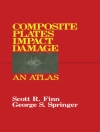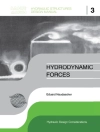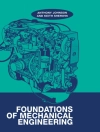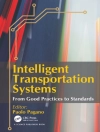Every year, the Technical University of Munich, the Bundeswehr University, and the University of Applied Sciences in Munich invite researchers and practitioners to join the Munich Symposium on Lightweight Design. Experts from industry and academia discuss design tools, applications, and new developments. Topics include, e.g., composite structures, SHM, microstructures, material modelling, design for additive manufacturing, numerical optimization and in particular topology optimization in aerospace, automotive and other industries. The talks are summarized in short articles and presented in this volume.
Table des matières
Optimization: Design of a motorcycle triple clamp optimised for stiffness and damping.- Fully Automated Subdivision Surface Parametrization for Topology Optimized Structures and Frame Structures using Euclidean Distance Transformation and Homotopic Thinning.- A Concept Towards Automated Reconstruction of Topology Optimized Structures Using Medial Axis Skeletons.- Design and Optimization of Ultra-Stable Fine-Pointing Structures for the CHIME Instrument.- Lightweight engineering design of dynamic systems with gradient-based design optimization.- Hard- and Software fusion for process monitoring during machining of fiber reinforced materials.-
Composite Materials: Additive manufactured break-out cores for composite production: A case study with motorcycle parts.- Neue Bauweisen von Wasserstoffdruckbehältern für die Integration in zukünftige Fahrzeugarchitekturen.- Bauraumoptimierter Wasserstoff Tank mit innerer Zugverstrebung.- Innovative design and manufacturing techniques for fiber reinforced plastic components.- Application of Tsai’s Theory for the Laminate Optimization of an Aerospace.
A propos de l’auteur
Simon Pfingstl (*1994) is a research associate at the Laboratory for Product Development and Lightweight Design at the Technical University of Munich (TUM). His research is about statistical methods and machine learning techniques, such as Gaussian processes, and their application to prognostic health monitoring of aircraft structures. Before he became a research associate, he studied automotive engineering (B.Sc.) and computational engineering (M.Sc.) at the University of Applied Sciences Munich with a focus on structural mechanics and optimization.
Alexander Horoschenkoff (*1960) studied mechanical engineering at TUM and received his Ph D from the mechanical engineering department. He started his career at the research center of Messerschmitt-Bölkow-Blohm (MBB) in Ottobrunn. Within the research core team of the Daimler Chrysler AG he was responsible for the mechanical technology field. Since 2001 he has been a professor at the Munich University of Applied Sciences, Department of Mechanical Engineering, Automotive and Aeronautics Engineering and head of the CC “Smart Composites”.
Philipp Höfer (*1979) is a full professor at the Institute of Lightweight Engineering within the Department of Aerospace Engineering at the Universität der Bundeswehr München. After obtaining his Ph D in the field of material modelling and continuum mechanics, he has gained extensive experience in the development of aircraft structures at Airbus over many years. His research interests include the conceptual, functional and structural design of lightweight structures and the investigation of their static and dynamic characteristics by analysis and test.
Markus Zimmermann‘s (*1976) research is about the design and optimization of complex mechanical systems, such as automobiles or robots. Before he became a professor at TUM, he spent 12 years at BMW designing vehicles for crash and vehicle dynamics. His academic training is in Mechanical Engineering with degrees from the Technical University of Berlin (Diplom), the University of Michigan (M.S.E.) and MIT (Ph.D.).












